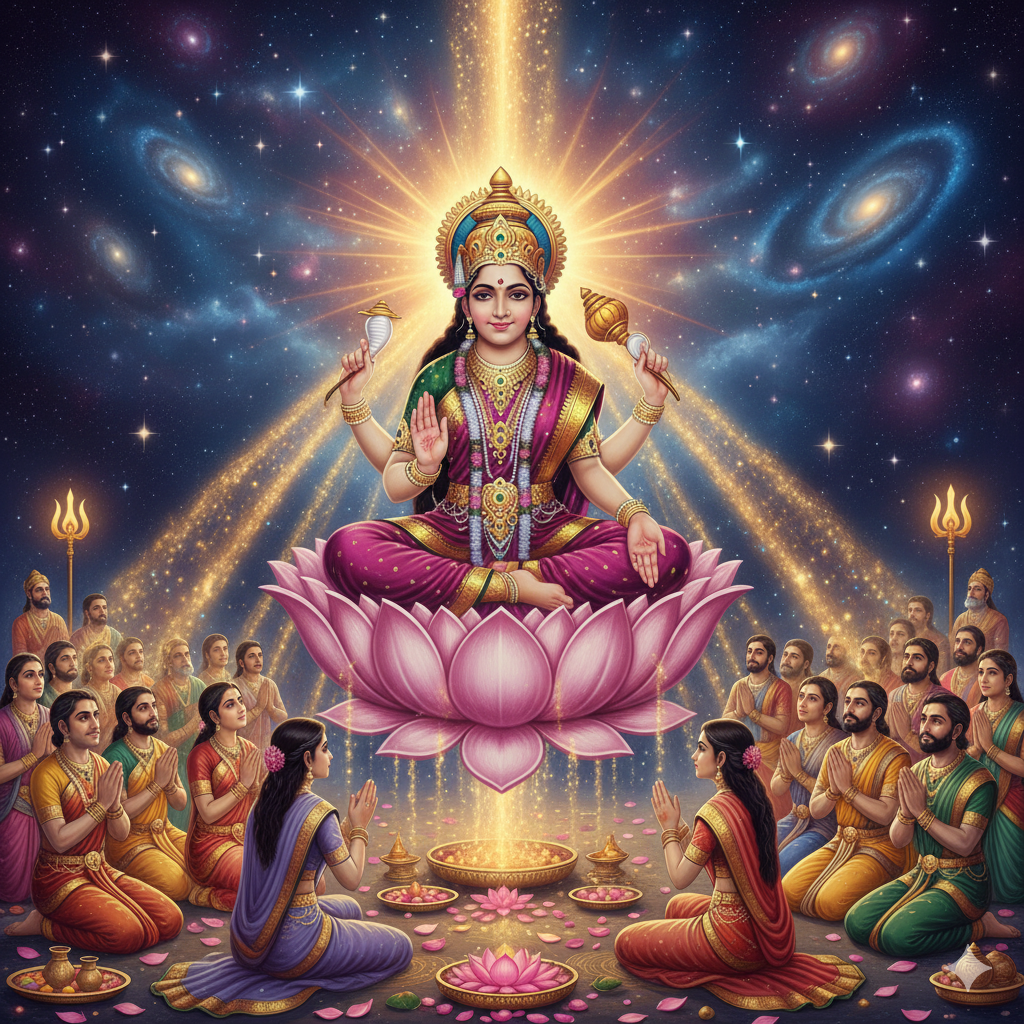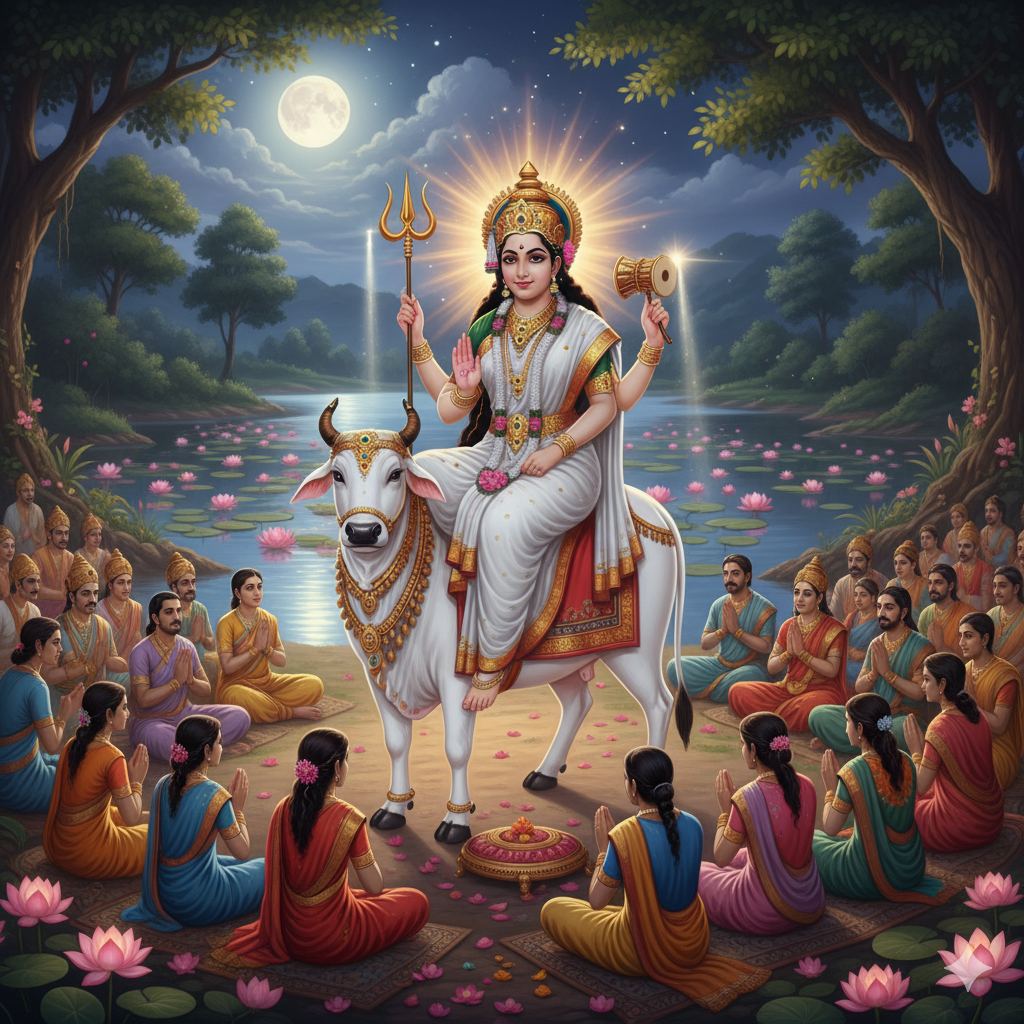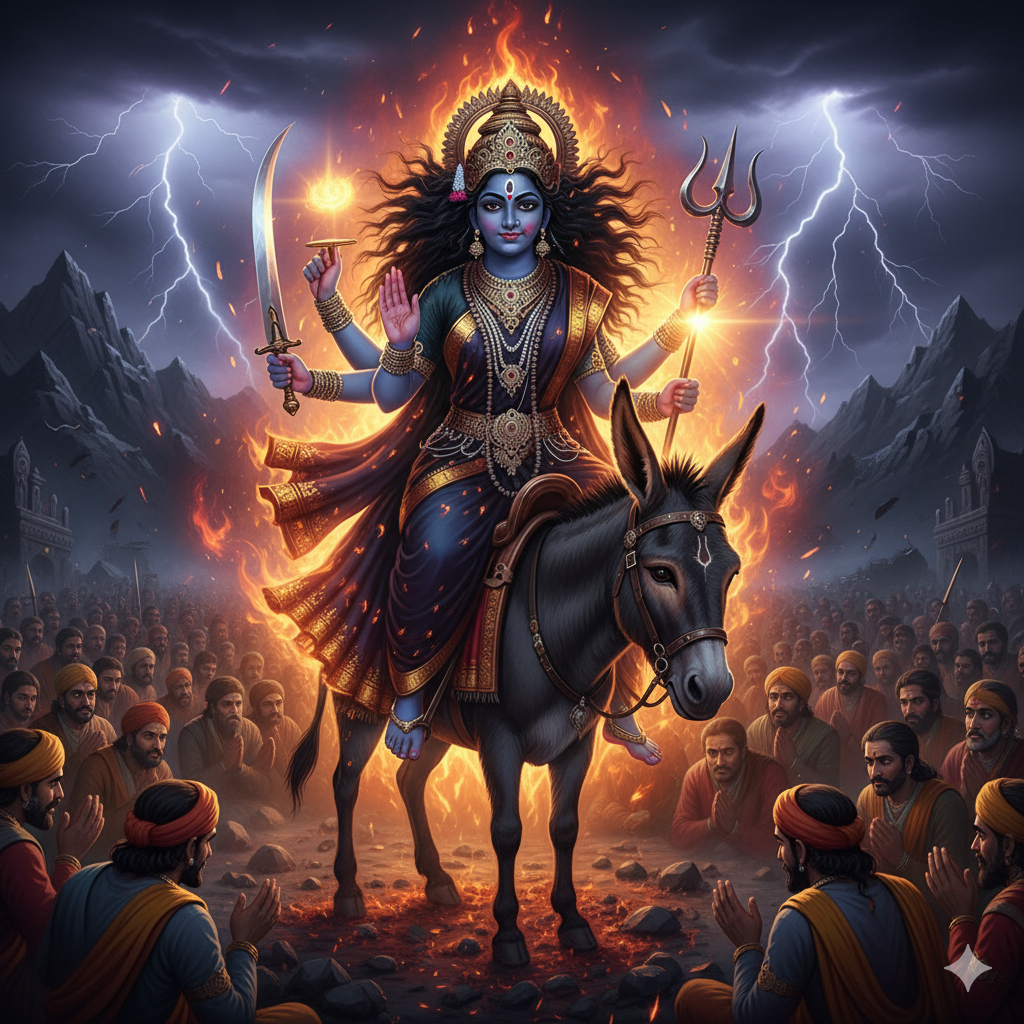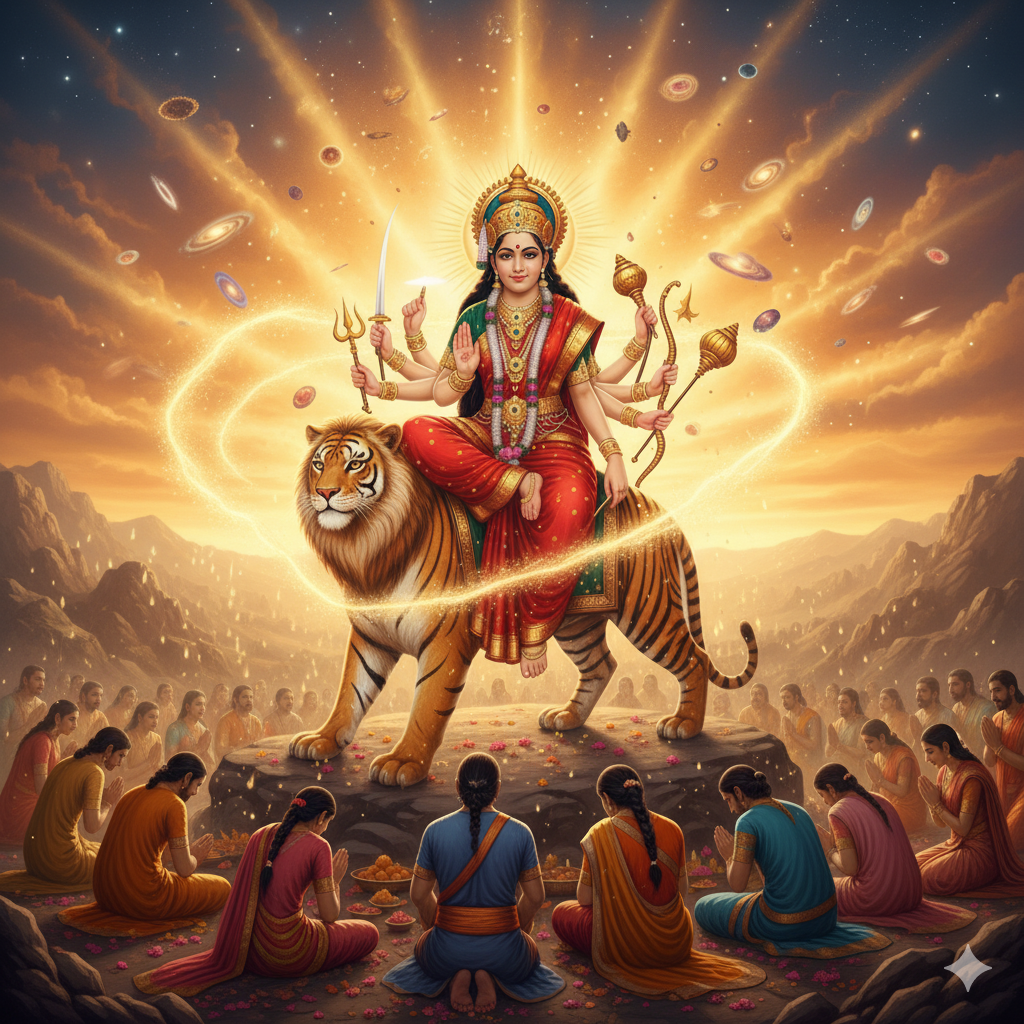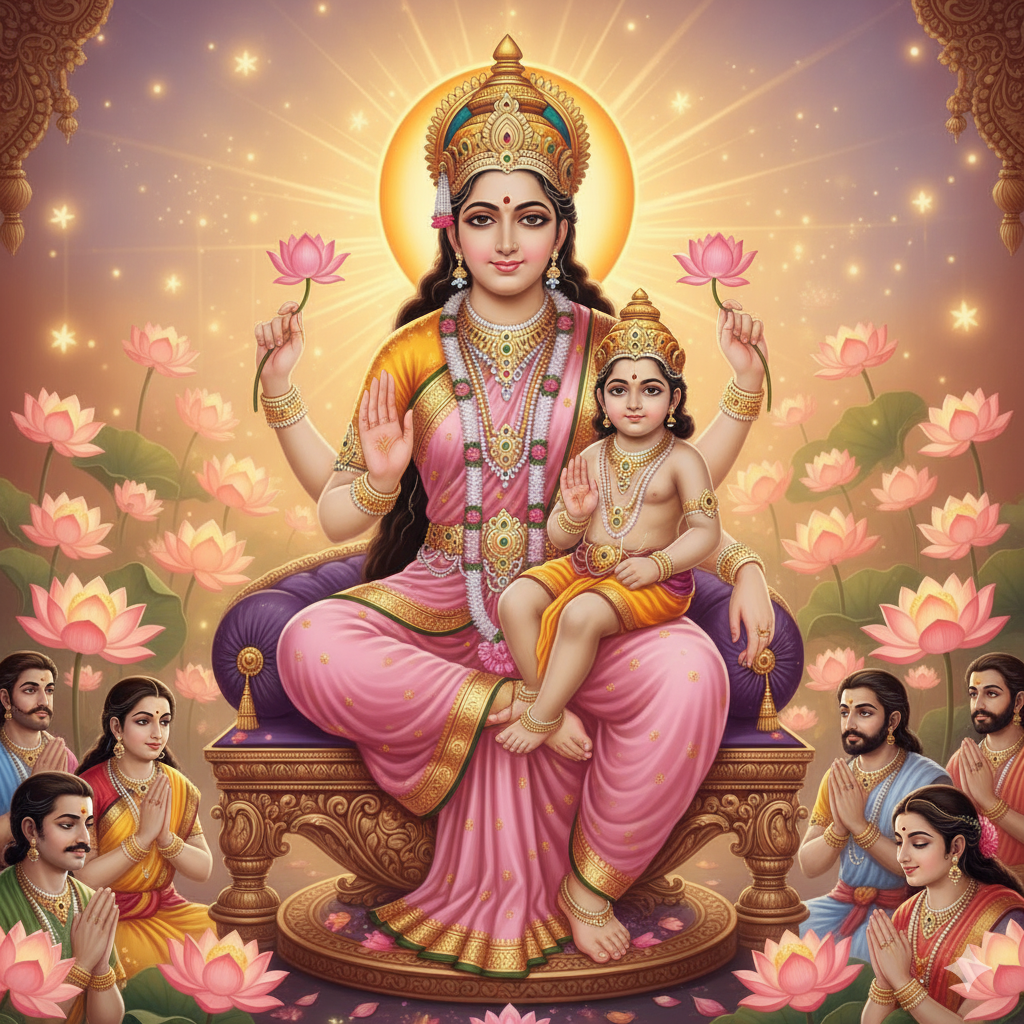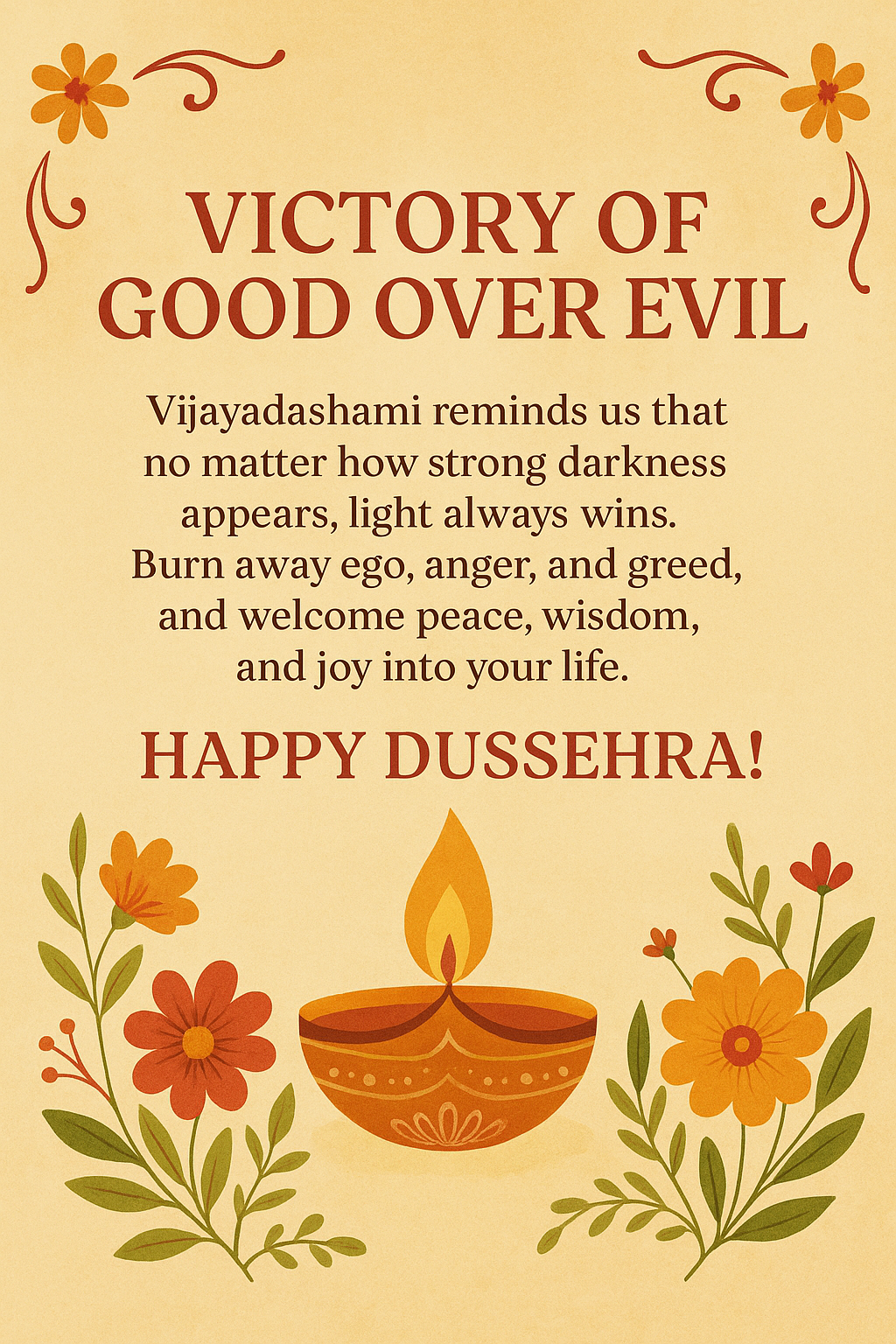
Introduction
Vijayadashami (Dussehra) : Vijayadashami, also known as Dussehra, is one of the most auspicious Hindu festivals celebrated across India and beyond. It falls on the tenth day of the bright half (Shukla Paksha) of the Ashwin month in the Hindu calendar, usually in September or October. The festival marks the victory of good over evil, truth over falsehood, and light over darkness.
It is celebrated for two major reasons:
- The triumph of Lord Rama over Ravana – symbolizing the destruction of arrogance, ego, and evil.
- The slaying of the demon Mahishasura by Goddess Durga – symbolizing the ultimate feminine power (Shakti).
Vijayadashami is not just a religious festival but a cultural celebration of values, courage, devotion, and dharma (righteousness).
History of Vijayadashami
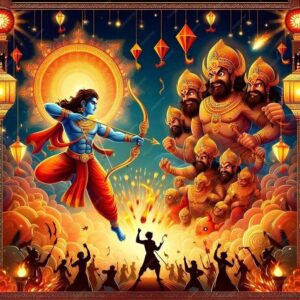
1. Rama’s Victory Over Ravana : Vijayadashami (Dussehra)
- The most popular legend of Vijayadashami comes from the Ramayana.
- Lord Rama, along with Lakshmana, Hanuman, and the Vanara Sena, fought Ravana, the ten-headed demon king of Lanka.
- On this day, Rama defeated Ravana, symbolizing the victory of truth and dharma over falsehood and adharma.
- This victory is celebrated with Ravan Dahan (burning effigies of Ravana, Meghnath, and Kumbhakarna).
2. Durga’s Victory Over Mahishasura
- According to Devi Mahatmya, the gods created Goddess Durga, who fought the demon Mahishasura for nine days and nights.
- On the tenth day, she killed him, restoring cosmic balance.
- This is why Vijayadashami also marks the end of Navratri.
3. Pandavas’ Return from Exile
- In the Mahabharata, the Pandavas completed their 13 years of exile on Vijayadashami.
- They retrieved their weapons hidden in a Shami tree and went on to win the war against the Kauravas.
- This led to the tradition of Shami Puja on Dussehra.
Rituals and Celebrations Of Vijayadashami (Dussehra)
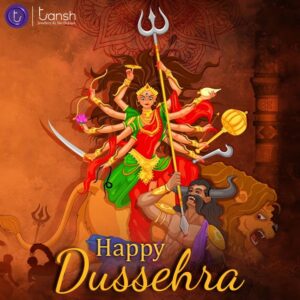
Ghatasthapana and Navratri Culmination
- The festival begins with Navratri, a nine-day worship of the nine forms of Goddess Durga.
- Vijayadashami is the tenth day, marking the divine victory.
Ravan Dahan
- Across North India, huge effigies of Ravana, Meghnath, and Kumbhakarna are set on fire with fireworks.
- Symbolizes the destruction of ego, lust, and greed.
Shami Puja & Ayudha Puja
- In Maharashtra and Karnataka, people worship the Shami tree and exchange its leaves as a symbol of gold, wishing prosperity.
- Ayudha Puja is also performed, where tools, vehicles, and weapons are worshipped.
Mysore Dussehra
- The Mysore Palace in Karnataka is illuminated with 100,000+ lights.
- A grand procession (Jamboo Savari) with elephants, horses, and cultural performances is carried out.
Bengal Vijayadashami
- In West Bengal, it marks the end of Durga Puja.
- The idols of Goddess Durga are immersed in rivers with the chant “Bolo Durga Mai Ki Jai”.
- Married women celebrate Sindoor Khela, applying vermillion to each other.
South Indian Traditions
- In Tamil Nadu, Andhra Pradesh, and Kerala, Vijayadashami is considered auspicious for starting Vidyarambham (initiation of children into learning).
Symbolism of Vijayadashami (Dussehra)
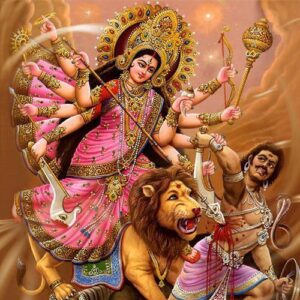
- Rama’s victory → Triumph of righteousness.
- Durga’s slaying of Mahishasura → Power of divine feminine energy.
- Burning of Ravana effigies → Burning inner negativity.
- Shami Puja → Respect for nature and prosperity.
- Ayudha Puja → Gratitude towards tools that support livelihood.
Spiritual Meaning
Vijayadashami teaches us that:
- Evil may be powerful, but truth ultimately wins.
- Life is a constant battle between dharma (righteousness) and adharma (unrighteousness).
- Victory is possible through courage, devotion, discipline, and unity.
- Women are embodiments of Shakti (divine energy) and must be respected.
Food and Festive Traditions
- In North India: Poori, Chole, Jalebi, and festive sweets.
- In Bengal: Khichuri, Sandesh, and Mishti Doi.
- In South India: Sundal, Payasam, and Vadai.
- Sharing food, Prasad, and community feasts strengthen unity.
Modern Relevance of Vijayadashami (Dussehra)
- Reminds us to overcome modern-day demons like greed, corruption, anger, and jealousy.
- Encourages social unity and cultural pride.
- Inspires us to follow the path of dharma and justice.
20 FAQs on Vijayadashami (Dussehra)
Q1. Why is Vijayadashami celebrated?
A: To mark the victory of good (Rama/Durga) over evil (Ravana/Mahishasura).
Q2. When is Vijayadashami celebrated in 2025?
A: On October 2, 2025 (Ashwin Shukla Dashami).
Q3. What is the significance of Ravan Dahan?
A: It symbolizes burning inner evils like ego, anger, and greed.
Q4. Why is it called Vijayadashami?
A: “Vijaya” means victory and “Dashami” means the tenth day.
Q5. What is Sindoor Khela?
A: A Bengali tradition where women apply vermillion to each other on Dussehra.
Q6. What is the Mysore Dussehra famous for?
A: Grand procession, illuminated palace, and cultural events.
Q7. Why is Shami Puja performed?
A: To honor the sacred tree and recall the Pandavas’ story.
Q8. What is Vidyarambham?
A: A South Indian ritual where children are initiated into education.
Q9. Which Goddess is worshipped on Vijayadashami?
A: Goddess Durga, symbolizing Shakti.
Q10. What is Ayudha Puja?
A: Worship of tools, vehicles, and weapons for success in work.
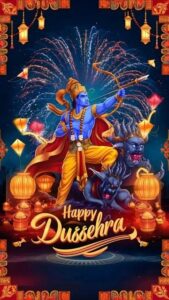
Q11. Is Vijayadashami only about Rama?
A: No, it also celebrates Goddess Durga’s victory over Mahishasura.
Q12. Why do we exchange Shami leaves?
A: They symbolize gold and prosperity.
Q13. What are the main foods eaten on Dussehra?
A: Sweets like Jalebi, Kheer, Poori, Sundal, Khichuri.
Q14. Is Vijayadashami the same as Navratri?
A: Vijayadashami is the culmination of Navratri.
Q15. What values does Dussehra teach?
A: Truth, courage, unity, and respect for women.
Q16. What is the importance of Rama’s story on Dussehra?
A: It shows that even the most powerful evil can be defeated.
Q17. Is Dussehra celebrated outside India?
A: Yes, in Nepal, Sri Lanka, Bangladesh, Mauritius, and more.
Q18. What is the role of women in Vijayadashami traditions?
A: Women are honored as embodiments of Durga/Shakti.
Q19. Why is effigy burning done at night?
A: Symbolic of darkness being destroyed by light.
Q20. How is Vijayadashami relevant today?
A: It inspires us to defeat modern evils like corruption and injustice.
Conclusion: The Eternal Message of Vijayadashami (Dussehra)
Vijayadashami, also known as Dussehra, is not just a festival of burning effigies or celebrating grand processions — it is a living reminder that dharma (righteousness) always triumphs over adharma (evil). Whether we look at it through the lens of Lord Rama’s victory over Ravana or Goddess Durga’s annihilation of Mahishasura, the festival carries the same timeless truth: goodness, truth, and virtue may face struggles, but they will ultimately prevail.
In today’s world, Dussehra also inspires us to burn the symbolic Ravanas within — anger, ego, greed, jealousy, hatred, and pride — so that our lives shine with wisdom, compassion, and inner peace. The festival also encourages us to celebrate community bonds, family togetherness, and the cultural richness of India.
As Vijayadashami marks the culmination of Navratri and opens the gates to the festive season leading up to Diwali, it reminds us that every ending is also a new beginning. Just as Lord Rama returned to Ayodhya in glory and Goddess Durga restored cosmic balance, may this Dussehra bring victory, light, and harmony into your life.
Let us remember: True victory is not over others, but over the darkness within ourselves.
May Maa Durga’s blessings and Lord Rama’s ideals guide us toward righteousness and success.
Wishing you and your loved ones a blessed, prosperous, and victorious Vijayadashami! 🌸🔥🙏

